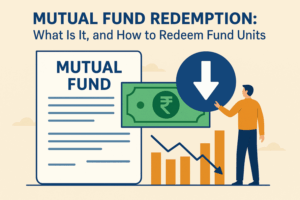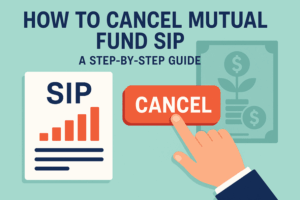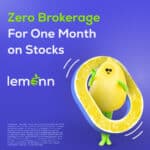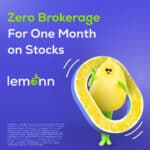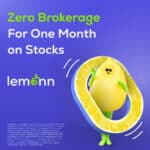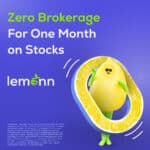SIP Calculator
×
Should You Consider Mutual Fund Size (AUM) While Investing?

Understanding AUM in Mutual Funds
When choosing mutual funds, people often look at returns, ratings, and risk levels. Yet, there’s another number that quietly shapes perception, AUM, or Assets Under Management.
What Is Assets Under Management (AUM)?
Assets Under Management, or AUM, represents the total market value of money a fund manages on behalf of investors. Imagine a giant pool where every investor’s contribution adds to the overall total. As markets rise or more people invest, the pool swells. When investors withdraw or prices fall, it shrinks.
AUM reflects two key elements: the fund’s popularity and how well it performs over time. For example, a mutual fund managing ₹10,000 crore isn’t just large by scale; it shows thousands of investors have entrusted it with their money. That trust builds with consistent results and reputation.
“Start investing with confidence! Explore the best
mutual funds
and grow your wealth.”
How AUM Reflects a Fund’s Popularity and Trust
When investors see a rising AUM, they instinctively feel reassured. A growing fund signals solid performance, steady inflows, and widespread confidence. It’s like a restaurant with a long waiting line, where people assume the food must be good.
Fund houses with larger AUMs usually have stronger research teams, smoother operations, and greater visibility. But while size brings reputation, it doesn’t automatically guarantee higher returns. A small, focused fund can perform equally well, sometimes even better, due to its flexibility.
The Pros of Investing in Large AUM Funds
Large mutual funds carry weight in the market for a reason. Their size brings advantages that directly impact investor experience and long-term results.
Higher Liquidity and Stability
Large AUM signals significant investor activity. This ensures that redemptions happen smoothly. Even when several investors withdraw, the fund handles it comfortably because of its diversified holdings.
These funds also bring stability during market swings. Their broad exposure across sectors cushions short-term shocks. Investors enjoy smoother rides while staying invested in turbulent phases.
Lower Expense Ratios
As funds grow, their fixed costs spread across a larger asset base. This naturally reduces expense ratios, the fee charged to manage investments.
For long-term investors, this small difference adds up. A 0.5% saving in annual expenses can significantly lift total returns over a decade. Lower costs mean more of your money keeps working for you.
Established Track Records and Fund Manager Expertise
Large funds usually have long histories and seasoned professionals managing them. They’ve witnessed multiple economic cycles, bull runs, recessions, policy shifts and learned how to handle them.
That experience builds credibility. It also means investors get access to strong internal processes, research capabilities, and diversified strategies that newer funds might still be developing.
The Drawbacks of Large AUM Funds
While large funds boost investor confidence, they can sometimes fall victim to their own size. Managing thousands of crores comes with its own challenges.
Potential Difficulty in Agile Portfolio Management
Handling a massive portfolio limits quick movement. A fund with thousands of crores cannot easily shift positions without impacting stock prices.
This makes portfolio adjustments slower during volatile markets. By the time large funds finish rebalancing, opportunities may fade. Smaller funds often move faster, adapting to short-term changes with less impact.
Diminishing Returns in Certain Market Caps
In mid-cap and small-cap categories, too much money can dilute returns. When inflows surge, the fund must invest across more stocks to avoid concentration.
That spreads performance thin. Instead of focusing on a few high-potential picks, the fund diversifies more widely than necessary. Over time, this reduces the edge that smaller funds often enjoy in niche segments.
Herd Behavior and Overvaluation Risks
Investors love joining what seems successful. A rising AUM fund attracts more inflows, often beyond what it can handle efficiently.
This leads to herd behavior, too much money chasing limited opportunities. As a result, fund managers might buy at higher valuations, which impacts future returns. Popularity becomes a double-edged sword.
When Small AUM Funds Might Be Better?
Sometimes, smaller funds outperform expectations. Their relatively smaller size gives them freedom and flexibility that big funds can’t always afford.
Higher Growth Potential in Niche Markets
Smaller funds usually explore newer, less crowded areas, emerging themes, small-cap stocks, or innovative sectors. They can take bold positions early, entering before the mainstream notices.
When those bets succeed, the growth multiplier feels powerful. Investors who spot such funds early often enjoy impressive returns as the fund matures.
Greater Flexibility for Fund Managers
A small fund moves swiftly. Managers can exit poor performers overnight and enter new opportunities without disturbing prices.
This freedom makes it easier to exploit market corrections or short-term rallies. Decision-making feels sharper and more tactical because every move matters.
Opportunities in Less Crowded Strategies
With fewer investors, smaller funds explore unique paths. They experiment with special themes, undervalued sectors, or innovative asset mixes.
These uncrowded strategies sometimes beat the mainstream, especially when the market broadens or new industries emerge. Small funds thrive on creativity and precise execution.
AUM Relevance Across Mutual Fund Types
The importance of AUM changes depending on the type of fund. What matters in debt funds might not matter as much in equity funds.
Equity vs. Debt Funds: AUM Impact Comparison
In equity funds, a large AUM gives confidence but doesn’t directly impact returns. What matters more is the quality of stock selection and fund management.
Debt funds, however, benefit significantly from a large AUM. Bigger funds can negotiate better rates, access top-rated securities, and manage liquidity more efficiently. So, AUM plays a more critical role in fixed-income investments.
Index Funds and ETFs: Does Size Matter?
In passive instruments like index funds and ETFs, AUM directly affects the performance. Larger funds mean higher liquidity, tighter spreads, and more efficient tracking of the underlying index.
Smaller ones can still perform well, but investors might face slightly wider gaps between buying and selling prices during trading hours.
Sectoral and Thematic Funds: Special Considerations
For sector-specific or thematic funds, too large an AUM can become limiting. When a theme focuses on a narrow industry, large inflows create pressure to invest in fewer stocks.
Smaller funds have the advantage here; they can stay focused and selective without worrying about overexposure.
Factors That Matter More Than AUM
AUM gives a quick impression, but several other factors determine actual fund performance. Smart investors dig deeper before making decisions.
Fund Performance History
A consistent performance record shows how the fund performs through ups and downs. Steady results across five to ten years reveal how effectively the manager handles market cycles.
History also reflects discipline. It shows that the fund doesn’t rely on lucky streaks but on skill and sound judgment.
Risk-Adjusted Returns and Sharpe Ratio
Raw returns can mislead. The Sharpe ratio tells how efficiently a fund earns returns for the amount of risk taken.
Funds with higher Sharpe ratios deliver more balanced performance. It’s a sign that the fund manager is making smart, controlled decisions rather than chasing risky opportunities.
Consistency of Fund Manager and Strategy
The experience and stability of the fund manager play a significant role in long-term results. Consistent leadership ensures that the investment approach remains steady even when markets shift.
When the strategy stays intact, the fund’s character remains the same, predictable, trustworthy, and aligned with investor goals.
Conclusion: AUM–A Factor, Not the Only One
AUM is valuable, but it’s only part of the bigger picture. It highlights scale, trust, and investor participation, yet real performance depends on multiple factors: manager skill, discipline, strategy, and timing.
For equity funds, a moderate AUM often works best, blending stability with flexibility. For debt and index funds, larger AUMs enhance efficiency and reliability.
When building a portfolio, treat AUM as a clue, not a conclusion.
FAQs
What is a good AUM size for mutual funds?
There’s no one-size-fits-all answer. For large-cap funds, bigger AUMs add credibility. For small-cap or thematic funds, moderate size keeps flexibility intact.
Is it risky to invest in a low AUM mutual fund?
Low AUM doesn’t always mean high risk. Many smaller funds perform, thanks to sharp strategies and focused management. What matters is how well the fund executes its plan.
Does high AUM guarantee better returns?
High AUM signals popularity, not performance. A large fund might have a solid track record, but real growth comes from effective decisions, timing, and strategy.
How often should I check a fund’s AUM?
Checking AUM every few months works fine. Watch for major jumps or drops; they indicate changing investor sentiment or significant market impact.
Do mutual funds with high AUM perform better in the long term?
Large AUM funds usually maintain steady performance due to experience and liquidity, but smaller ones sometimes outshine them in specific phases. Longevity depends on skill, consistency, and market conditions.
Disclaimer
The stocks mentioned in this article are not recommendations. Please conduct your own research and due diligence before investing. Investment in securities market are subject to market risks, read all the related documents carefully before investing. Please read the Risk Disclosure documents carefully before investing in Equity Shares, Derivatives, Mutual fund, and/or other instruments traded on the Stock Exchanges. As investments are subject to market risks and price fluctuation risk, there is no assurance or guarantee that the investment objectives shall be achieved. Lemonn (Formerly known as NU Investors Technologies Pvt. Ltd) do not guarantee any assured returns on any investments. Past performance of securities/instruments is not indicative of their future performance.

